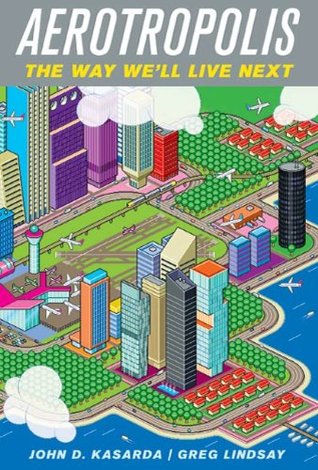Kindle Notes & Highlights
“Look for yesterday’s busiest train terminals and you will find today’s great urban centers. Look for today’s busiest airports and you will find the great urban centers of tomorrow.
In the end, we won’t stop flying for the simple reason that quitting now would run counter to our human impulse to roam. Will you be the one to tell a hundred million Chinese tourists (and another hundred million Indians) they’ll have to stay home?
LAX is a case study for how airports are incubators for trade and the cities that spring up to seize it.
“The Internet doesn’t make any of that obsolete,” he said. “It even encourages more travel, because it emphasizes how tightly costs and communication are bound together.
The World Trade Center is the centerpiece of the Dallas Market Center, the largest wholesale market in the world. Like the Merchandise Mart in Chicago (which it surpassed in size and importance), the complex is closed to the public,
took only an hour to traverse. The rule has since been dubbed Marchetti’s Constant.
J. F. Shea, the oldest and largest privately owned developer in the country, a builder of the Golden Gate Bridge and Hoover Dam.
SmartCode,
One of the best tools in our kit is something called “transit oriented development,” an idea coined by Peter Calthorpe the same year he helped found the Congress for the New Urbanism. The name says it all: neighborhoods and cities built along the splines of public transit.
The Airport leaves the city. The City follows the airport. The Airport becomes a city.
This way, the public sector gets the private one to pay for vital infrastructure—everything from sewer lines to light rail—while private interests help decide where it should go.
The Dutch East India Company, chartered in 1602, was the world’s first multinational and the first to issue stock, which traded on the planet’s original exchange.
Amsterdam and its airport are the model for the aerotropolis John Kasarda has in mind for Detroit.
Think global. Act global,”
The United Nations estimates livestock’s share of worldwide greenhouse gases at 18 percent, more than all forms of transport on the planet combined. We could erase the footprint of food miles—and all miles—by becoming vegetarians. We could do it if we gave up beef and dairy only once a week.
Growing food where it grows best and growing food that’s good for us matter a lot more than the mileage.
urban anthropologist Paco Underhill.
A350 XWBs, Airbus’s still largely conceptual knockoff of Boeing’s 787.
Researchers at the Santa Fe Institute have found that cities grow smarter and faster as they get bigger. “By almost any measure,” they wrote, “the larger the city’s population, the greater the innovation and wealth creation per person.” Their growth becomes “superlinear” as the number of connections between people increases exponentially.
the fundamental clash in business—company versus company, grappling mano a mano—is an illusion. The real competition, as Kasarda continually stresses, is supply chains versus supply chains, networks against networks.
“Our society is constructed around flows,” he wrote. “Flows of capital, flows of information, flows of technology, flows of organizational interaction, flows of images, sounds and symbols … The space of flows is the material organization of time-sharing social practices that work through flows”


